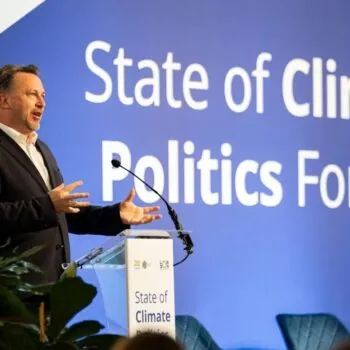In the following blog our new Senior Associate, Jonathan Walters looks at the changing role of the State since the Second World War. In particular, he examines how ideologies in favour of a small role for states depleted the preparedness of health service provision. As a result, health systems were not prepared for a surge in demand from the pandemic in 2020, and the global economy had to be greatly slowed down to avoid health systems being overwhelmed.
He begs the question, will the huge human and economic cost of doing that lead to a more proactive role for states in future? Will proactive states be able to avert the climate crisis?
Let’s give some provocative opinions to stimulate debate. Let’s divide economic history since World War 2 into four distinct periods.
From 1945 to the late 1970s, states were pretty proactive economically. Many industries were nationalised, national public health services were built, years of public education were increased and access to higher education opened to a much wider range of social classes, many areas of economic life became regulated, welfare benefits and labor protections were greatly expanded. Government budgets were expansionary, with fiscal deficits being actively used to stimulate growth. Large amounts of economic aid were provided to deprived regions, to countries devastated by war, and later to countries that had just been decolonized.
There was a wide sense of mutual responsibility, enlightened self-interest, and let’s “never again” return to the dog-eat-dog mentality of the post-World War I period and the Great Depression of the 1930s. Western economies enjoyed decades of prosperity in this post World War 2 period; incomes were growing, and unemployment was low.
But from the end of the 1970s, disillusion with the expansive economic role of the state set in. Economic growth had started to peter out, inflation was rising and eroding incomes, and unemployment was starting to rise fast. The Thatcher/Reagan revolution initiated a shrinking of the state’s economic role in many countries; “conservatism” about the role of government and “austerity” budgets, instead of stimulating growth through fiscal demand management, became the frequent watchwords; industries were extensively privatised, welfare benefits and labor protections cut back, national public health systems less generously funded and more health services left to market provision, many economic regulations were rescinded, and economic aid came under pressure.
The role of markets was much highlighted, and that of government diminished. After a period of recession, economies started booming again, but generally with high levels of inequality and economic insecurity.
Towards the later part of this period there was a global financial crisis. As a result of the crisis, inequality generally increased, but relatively little was done to address the root structural causes of the crisis. One eventual result was a sharp increase in populist politics and nativist protectionist economic sentiment, strongly supported by many who felt “left behind”. The role of markets was diminished by this protectionism through “trade wars”, but without the state becoming significantly more active in the domestic economic sphere.
Overall, the appropriate economic role of the state was still widely believed to be relatively small, and public budgets remained generally fiscally restrained. Those decades since the late 1970s, characterized by more limited roles for government intervention and by leaving service provision to markets came into sharp relief in early 2020: health services and food systems could not cope with a pandemic-related surge in demand. People were widely shocked by the discovery.
The second period of the post-World War 2 era could be said to have ended in early 2020, when it became apparent that the philosophy of a limited role for government and of leaving service provision to markets had left the health sector unprepared for the surge in demand that COVID-19 brought. Many health systems have had far too few hospital beds, too few staff, too few ventilators, even too few gowns and facemasks (a jaw-dropping shock given the basic nature of this equipment). What was the consequence?
Governments decided to literally stop much of their economies, threatening the first Great Depression since the 1930s. In a matter of a few weeks, governments and parliaments then jettisoned four decades of fiscal restraint and committed to absolutely massive budget deficits – trillions and trillions of dollars – to salvage their economies and people’s livelihoods in the face of the economic lockdown. What an incredible cost of “flattening” the hump in the curve that those decades had created! In this ongoing third period of post-WW2 history, we have yet to see how the lockdown and this huge government stimulus will work.
The fourth period will come when the COVID-19 pandemic abates, and the economy can be allowed to start recovery. Then the really interesting and contentious debate will start.
Many questions will be asked. But perhaps the most important will be: having paid an enormous price for not having averted this pandemic crisis, will governments do what’s necessary to avert other crises, and particularly what could be the mother of all crises: the climate crisis? Will governments use this unprecedented spending to create more resilient economies and societies? More on that in the next blog. Watch this space.



